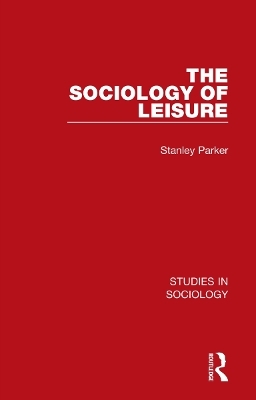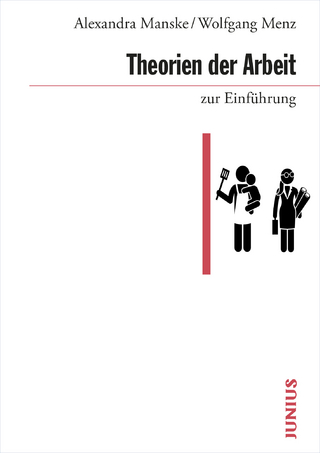
The Sociology of Leisure
Seiten
2023
Routledge (Verlag)
978-1-032-10087-6 (ISBN)
Routledge (Verlag)
978-1-032-10087-6 (ISBN)
In the 1970s the subject of leisure was attracting interest among both social scientists and people concerned with developing recreation policies. As well as making an academic contribution, this book, first published in 1976, provided practitioners with comprehensive review of social research finding over the whole field of leisure.
In the 1970s the subject of leisure was attracting interest among both social scientists and people concerned with developing recreation policies. A relative newcomer to the sociological scene at the time, leisure was beginning to compete in research effort and theory-building with the more established fields of sociology. As well as making an academic contribution, this book, originally published in 1976, provided practitioners (such as planners, administrators and managers) with an up-to-date and comprehensive review of social research finding over the whole field of leisure.
Part One deals with the cultural context in which leisure, as we knew it, had developed, and includes the history of leisure in industrial society and the variety of ways in which people can experience leisure at various stages of the life cycle. In Part Two leisure is related to other spheres of life – work, the family, education and religion. Part Three relates academic to practical concerns of planning and providing for leisure, including factors in demand and supply. The final chapter examines what the sociology of leisure had to tell us about current trends in society and the directions of probable future change. The illustrative material, drawn from a wide variety of sources, is mainly British but also includes some contributions from the United States and other countries.
In the 1970s the subject of leisure was attracting interest among both social scientists and people concerned with developing recreation policies. A relative newcomer to the sociological scene at the time, leisure was beginning to compete in research effort and theory-building with the more established fields of sociology. As well as making an academic contribution, this book, originally published in 1976, provided practitioners (such as planners, administrators and managers) with an up-to-date and comprehensive review of social research finding over the whole field of leisure.
Part One deals with the cultural context in which leisure, as we knew it, had developed, and includes the history of leisure in industrial society and the variety of ways in which people can experience leisure at various stages of the life cycle. In Part Two leisure is related to other spheres of life – work, the family, education and religion. Part Three relates academic to practical concerns of planning and providing for leisure, including factors in demand and supply. The final chapter examines what the sociology of leisure had to tell us about current trends in society and the directions of probable future change. The illustrative material, drawn from a wide variety of sources, is mainly British but also includes some contributions from the United States and other countries.
Stanley Parker
Acknowledgements. Introduction. Part 1: The Cultural Context of Leisure 1. A Historical and Comparative View 2. Leisure in Industrial Society 3. Variety of Leisure Experience 4. Leisure in the Life-Cycle Part 2: Leisure and Other Spheres of Life 5. Leisure and Work 6. Leisure and the Family 7. Leisure and Education 8. Leisure and Religion Part 3: Leisure Planning and Policies 9. Consumers and Demand 10. Providers and Provision 11. Conclusion – Leisure and Tomorrow. Index.
| Erscheinungsdatum | 03.10.2023 |
|---|---|
| Reihe/Serie | Studies in Sociology |
| Verlagsort | London |
| Sprache | englisch |
| Maße | 138 x 216 mm |
| Gewicht | 320 g |
| Themenwelt | Sozialwissenschaften ► Soziologie ► Mikrosoziologie |
| ISBN-10 | 1-032-10087-7 / 1032100877 |
| ISBN-13 | 978-1-032-10087-6 / 9781032100876 |
| Zustand | Neuware |
| Haben Sie eine Frage zum Produkt? |
Mehr entdecken
aus dem Bereich
aus dem Bereich


